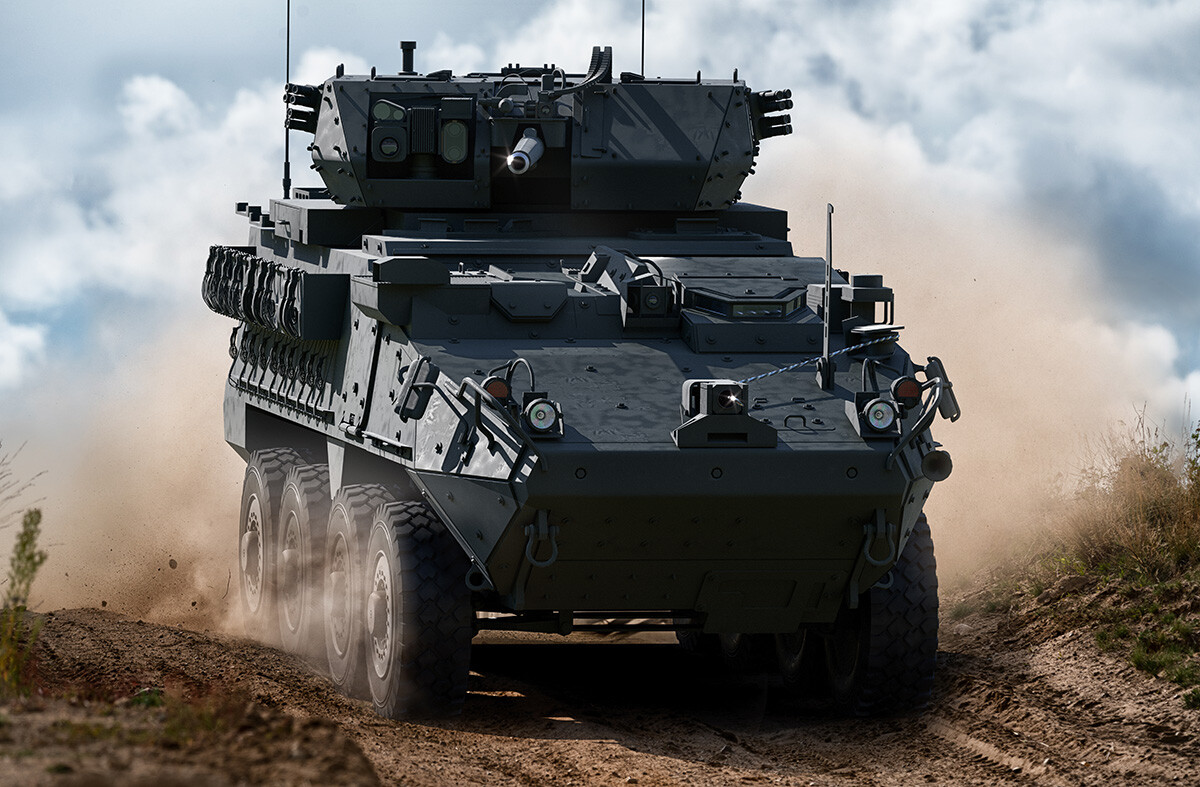Whether racing to a scene, stabilizing a patient, or managing a crisis from the back of a mobile...
Green Machines: Climate Control on the Frontlines


Climate control may not be the first thing that comes to mind when you think of military vehicles, but HVAC-R (Heating, Ventilation, Air Conditioning, and Refrigeration) plays a critical role in keeping them mission-ready. Whether it’s a tactical truck running in silent mode or an armored personnel carrier braving sub-zero temperatures, these systems do far more than provide comfort—they’re built for survival, performance, and operational success.
Read on to discover how MCC’s military HVAC systems are keeping military vehicles mission-ready—whether they run on diesel, jet fuel, or next-generation hybrid technology.
Built for Readiness: How Military HVAC-R Differs from Commercial Systems
Commercial HVAC focuses on comfort and cost, while military HVAC systems are built for survivability, stealth, and extreme durability in unpredictable environments. MCC designs mission-ready HVAC solutions that deliver performance no matter the vehicle or fuel source.
The key differences between military and commercial HVAC include:
- Battery and electronics cooling – Preventing overheating of critical vehicle systems.
- Environmental adaptability standards – Operating in extreme conditions with strict requirements.
- Operational efficiency and logistics support – Reducing maintenance demands and ensuring parts availability.
- Climate control for personnel and passengers
Battery and Electronics Cooling
Military vehicles are packed with high-tech sensors, communication systems, and powertrain components that generate significant heat. Effective HVAC prevents overheating, system failures, and reduced battery efficiency, ensuring these critical systems function reliably in high-stakes operations.
Environmental adaptability standards
Unlike commercial HVAC systems, military climate control must meet numerous environmental adaptability standards to survive extreme conditions and maintain stealth.
Extreme Conditions
While commercial vehicles can withstand temperatures ranging from -40°C to +85°C), military vehicles must operate and survive in temperatures ranging from -67°F to 257°F (-55°C to +125°C).
Stealth and Electromagnetic Compliance (EMC)
In tactical situations, running an engine can compromise a vehicle’s position. HVAC-R systems allow climate control to continue while the engine is off, preventing electromagnetic and acoustic signals from revealing the vehicle’s location. Battery-powered components must also be kept cool to avoid heat buildup that could interfere with thermal camouflage.
Ruggedization and MIL-STD-810 Compliance
Military HVAC systems must withstand sand, dust, salt fog, humidity, vibration, and shock, far beyond commercial requirements. MIL-STD-810 testing ensures HVAC components survive in battlefield conditions. Military systems often modify commercial-off-the-shelf (COTS) components and reinforce them for durability.
Chemical and Biological Protection (CARC Coating)
Military HVAC enclosures and components must be coated with CARC paint, which protects against chemical agents, biological threats, and harsh decontamination procedures. Unlike regular vehicle paint, CARC is non-reflective for low visibility and resistant to corrosion.
Operational Efficiency and Logistics Support
Military HVAC must meet standardized parts and maintenance requirements for easy servicing in remote locations.
Purpose-built HVAC systems help military vehicles control fuel consumption, extend component lifespan, and keep maintenance predictable. This is especially critical in remote areas where supply lines are limited, and repairs must be minimal and efficient.
Climate Control for Personnel and Passengers
Like anyone, soldiers perform at their best when they aren’t contending with extreme heat or cold. But in military vehicles, climate control can be mission-critical. Armored vehicles trap heat, and personnel wearing heavy gear intensifies the risk of heat stress, making cooling essential for endurance, focus, and reaction time. HVAC systems for military trucks, armored carriers, and other vehicles regulate cabin temperatures, ensuring personnel stay alert and mission-ready, no matter the conditions outside.
HVAC in Action: How Different Military Vehicles Rely on Climate Control
Military vehicles serve vastly different roles, which is why MCC tailors its HVAC systems to meet their specific needs. Here’s how climate control functions across various military platforms:
Armored Personnel Carriers (APCs) and MRAPs (Mine-Resistant Ambush Protected Vehicles)
These heavily armored vehicles protect soldiers from threats. But they also trap heat inside. Without effective cooling, internal temperatures can rise dangerously fast, affecting both soldiers and electronics.
Medium Tactical Trucks (FMTVs)
These workhorse vehicles transport troops and cargo through extreme conditions. Their HVAC systems must handle arctic cold, desert heat, and everything in between, ensuring both personnel and temperature-sensitive supplies remain protected.
HMMWVs (Humvees) & JLTVs (Joint Light Tactical Vehicles)
The Humvee set the standard for military mobility, but the JLTV has taken it further with improved armor, power, and performance. Both vehicles rely on HVAC systems to maintain cabin temperature and reduce heat buildup in electronic systems.
Amphibious Vehicles
Operating on both land and water adds another layer of complexity. HVAC systems in amphibious vehicles must manage extreme temperatures and prevent corrosion from saltwater exposure.
Hybrid and Electric Military Vehicles
While fully electric military vehicles are still in early development, hybrid models are already in use. These vehicles require battery thermal management systems (BTMS) to keep large battery packs within optimal temperature ranges, ensuring reliable performance. MCC is at the forefront of developing HVAC-R solutions for hybrid military trucks with silent watch capabilities.
Fueling Performance: Diesel, JP-8, and Hybrid Electric Military Vehicles
MCC’s HVAC systems are designed to function flawlessly across all military vehicles, whether powered by diesel, JP-8, hybrid power, or electricity. While their power sources may differ, the HVAC demands remain the same: maintain climate control, cool critical systems, and perform reliably in extreme conditions.
Diesel and JP-8: The Military’s Single-Fuel Standard
Most military vehicles are designed to run on JP-8 jet fuel, even those originally built for diesel. This simplifies logistics but does not impact HVAC performance—HVAC operates the same way regardless of fuel type.
Hybrid and Electric Vehicles
Without a constantly running engine, HVAC must be optimized for energy efficiency to avoid draining the battery. The absence of waste heat from combustion engines also means heating must be actively generated, requiring additional power.
Standby Battery Systems
Some military vehicles, such as command centers and silent watch vehicles, use battery power to run HVAC while idling. These require specialized battery thermal management to prevent overheating and excessive energy draw.
What’s Next for Military HVAC-R?
As military technology evolves, so do the demands on HVAC systems. Several innovations are shaping the future of climate control in military vehicles:
- Sodium-Ion and solid-state batteries: Safer, more stable alternatives to lithium-ion, offering better thermal performance.
- Advanced cooling materials: Phase-change materials and AI-driven climate control that adapt to mission conditions.
- Thermal camouflage: New HVAC technologies designed to reduce heat signatures for stealth operations.
MCC is working closely with OEMs to refine HVAC solutions that meet the military’s toughest challenges—ensuring that no matter the terrain, temperature, or mission, military vehicles remain battle-ready.
February 27, 2025



